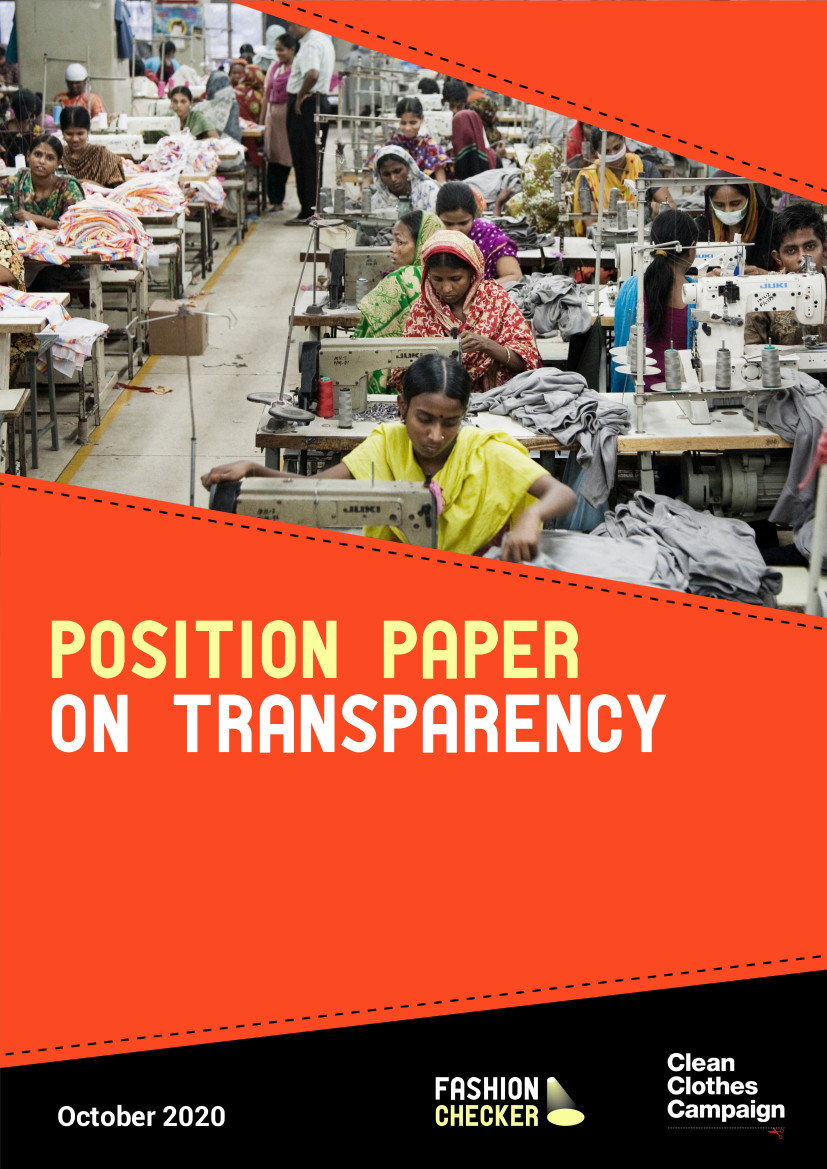
Break the chains: transparency in the 2020 supply chain(s)
A new position paper on supply chain transparency in the global garment industry, pleading for mandatory disclosure and advocating for better rules to enforce human rights due diligence.
The Clean Clothes Campaign has published its latest position paper on corporate transparency in textile global supply chains. Following up from the 2016 report (available here), it pictures the state of corporate transparency practises in the global garment industry.
Many initiatives have been taken up in the last four years. 2016 has been the year of the Transparency Pledge, supported by an international coalition of nine labour and human rights organisations. As a best practise, the Transparency Pledge represents a minimum standard, since it requires garment companies to disclose a number of specific information on their suppliers along the chain. For how limited this disclosure is, it has nonetheless reversed the way at which companies look at stakeholders’ interests and the management of information, as up until a few years before no major (apparel) company had disclosed their suppliers’ list and location. To date, 76 global garment companies have aligned, are close to align or have committed to align to the pledge (the full list is available here).
In the last four years, a range of Multi-Stakeholders Initiatives and other agreements have also been set up at local, regional or global levels, fostering companies’ best practises and voluntary minimum ethical standards. The European Union has approved the Directive on non-financial disclosure applicable to large enterprises, enacted by Member States in 2016, and a number of national legislations in Europe have also been approved.
These initiatives are laudable, but they have a limited impact. MSIs are voluntary and often business-led, and information published pursuant to the Transparency Pledge is merely quantitative and does not enable stakeholders to fully assess working conditions along the chain.
Transparency’s aim is to enable brands’ stakeholders to have access to information and facilitate brand collaboration and collective action in order to stop, prevent, mitigate, and provide remedy for labour abuses in supply chains.
Therefore, in order for transparency practises to be meaningful, disclosures must enable stakeholders to “work” with published data. This requires information to include quality data on suppliers such as presence of unions, workforce information (gender, migrants), purchasing practises, grievance mechanisms. As our Fashion Checker shows, transparency practises on these issues are still lacking under all aspects. While companies have started to publish some data and a few legislations now favour corporate transparency, the lack of consistent disclosure practises is still an issue to tackle.
The Clean Clothes Campaign calls for a system change, in which full transparency of information is mandatory for all garment brands, retailers and suppliers and includes information on the manufacturing process and locations, social aspects -including wage levels- and product life cycle, to be provided in open data standards and machine readable formats.
Also, the paper proposes a set of demands of policy reforms to be enacted at the European level, addressing non financial disclosure, human rights due diligence, and public procurement legislations.
See the full position paper here